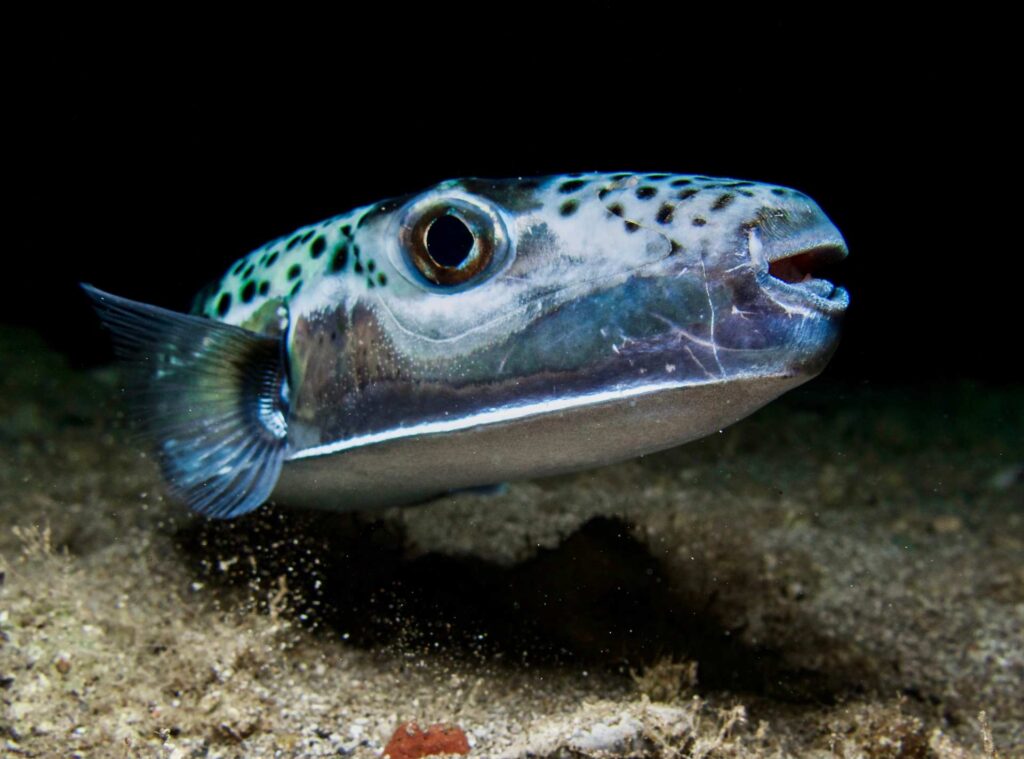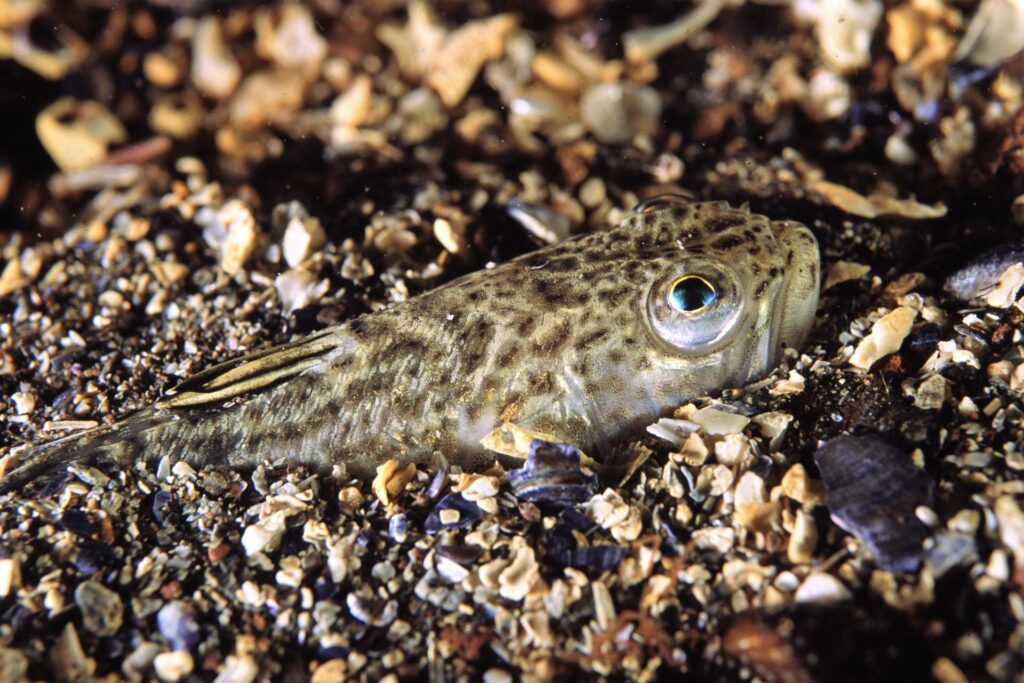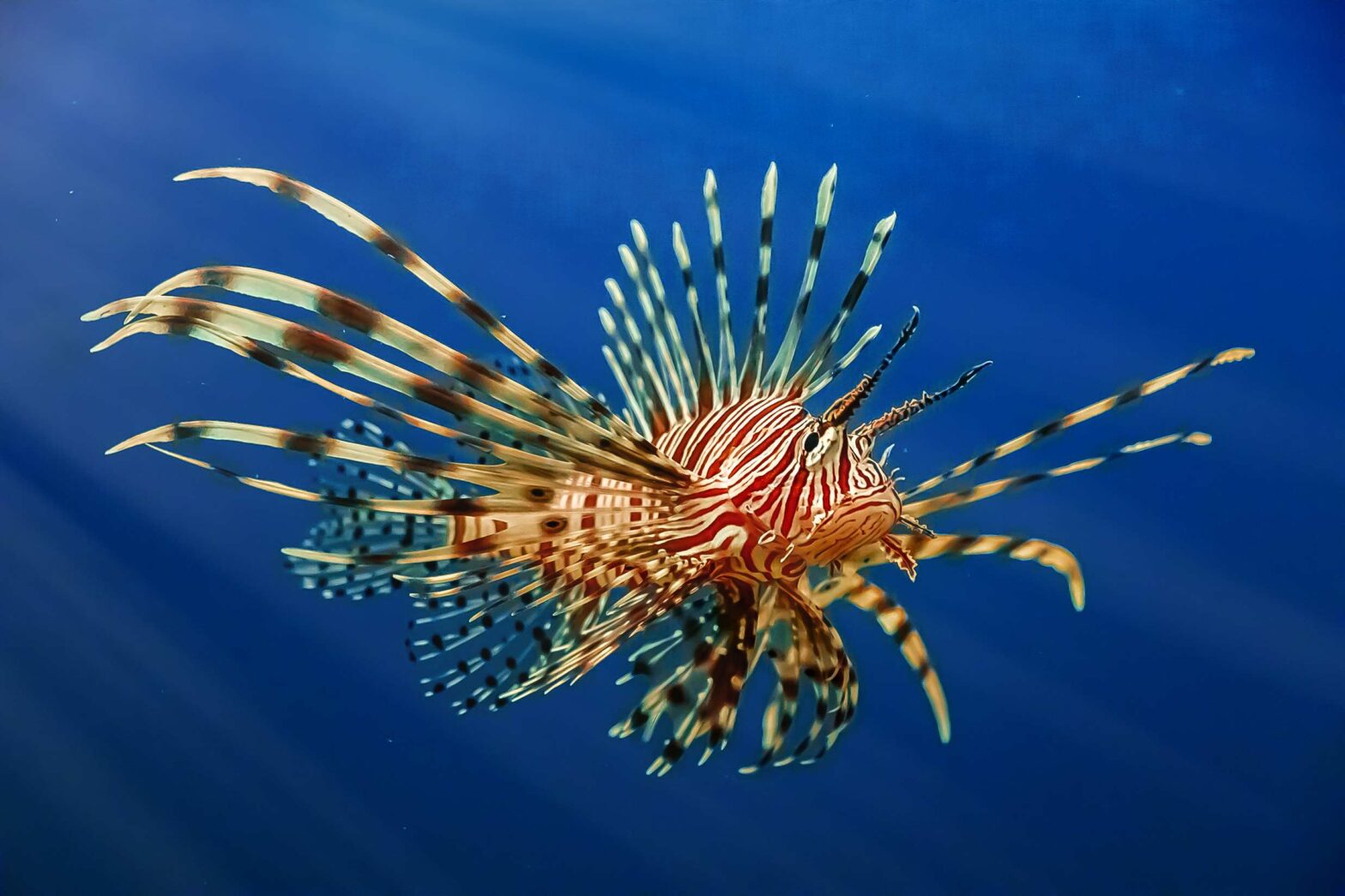Holidaying by the Mediterranean? Be aware of these fishes.
As the earth and its oceans warm up, holiday makers are starting to encounter new sea creatures, whose geographic ranges have shifted due to the changing environment. Some of the species are poisonous to humans, and OceanCare is therefore providing a short overview of some invasive and local species to watch out for. It is important to remember, as always, that with a little care, we can continue to enjoy the beach and the ocean in safety.
Lionfish are a good example of the way that climate change is exacerbating the problem of invasive species. The Mediterranean region is warming 20 per cent faster than the global average with sea temperature expected to rise by 3.5 degrees Celsius in the next 70 years. As such, conditions in the Eastern Mediterranean Sea are becoming ideal for many Red Sea Species such as the Red Lionfish.
The clear priority is therefore that the world meets its Paris climate commitments, but also important is the need to allow stocks of large fish and predators in the Mediterranean to recover, which can help control numbers of invasive species such as Lionfish.
Lionfish
Where do they occur: Red Lionfish (Pterois volitans – see image above) are non-native to the Mediterranean but have become increasingly common in parts of the Mediterranean in recent years. Mostly observed in the Eastern Mediterranean, these Lionfish have been reported as far west as Sicily and north into the Adriatic Sea off Croatia. Unfortunately, Lionfish are very good colonisers, and their numbers are increasing at unprecedented rates, including due to a lack of natural predators and favourable conditions arising from a changing climate (see below)
What are the risks: These fish can be found at shallow depths of 1 to 2 metres but tend to stay in deeper waters and therefore pose a greater health risk to divers than to tourists on the seashore. Their sting can cause severe effects including pain, fever, and temporary paralysis, unfortunately there are also reports of fatalities from a lionfish sting among young children and the elderly. It is worth noting that the greater risk of this invasive species is actual to native fish populations and therefore fishers, as these carnivorous fish are effective hunters.
Pufferfish
Where do they occur: The Silvery Pufferfish (Lagocephalus sceleratus) is also an invasive species in the Mediterranean. It comes from the Indo-Pacific Ocean and seems to have reached our shores through the Suez Canal, there are reports of the Pufferfish from waters around Greece, Cyprus, Israel and Italy.
What are the risks: Although not directly dangerous to humans, Pufferfish are highly poisonous for us and cannot be eaten, even when cooked. They are aggressive predators that have even been known to destroy fishing nets to get at the catch inside, if they are caught in a net with other fishes, they will attack and poison them, spoiling the entire catch. There are further concerns that their toxins have been detected in shellfish, however, it remains unclear how these are transferred.

Silvery Pufferfish
Lesser Weever
Where do they occur: The Lesser Weever (Echiichthys vipera) is native to the Mediterranean and found mainly along the northern coast. Owing to the high number of bathers, stings are relatively common, although individual chances of being stung are comparatively low. The fish lies buried in sand waiting to catch small fish. Its dorsal fin consists of strong spines with poison glands which can inflict an extremely painful sting.
What are the risks: Victims of stings from a lesser weever describe the initial pain as barely noticeable with a significant increase in the subsequent minutes, such that the pain is much worse than a wasp or bee sting, however, there are no reported cases of fatality from a lesser weever sting in the Mediterranean.

Lesser Weever
References
- GFCM – Invasive species and the Mediterranean
- Guardian – Lionfish as invasive species in the Mediterranean
- Plymouth University – managing Lionfish populations in the Mediterranean
- iNaturalist – Greater Weever
- Trachinidae rafinesque – World Register of Marine Species
- WebMD – Weeverfish Sting
- Fishbase – Family Tetradontidae
- New Scientist – Invasive Pufferfish in European Waters
- Cefas – Pufferfish causes risk to shellfish in Europe
